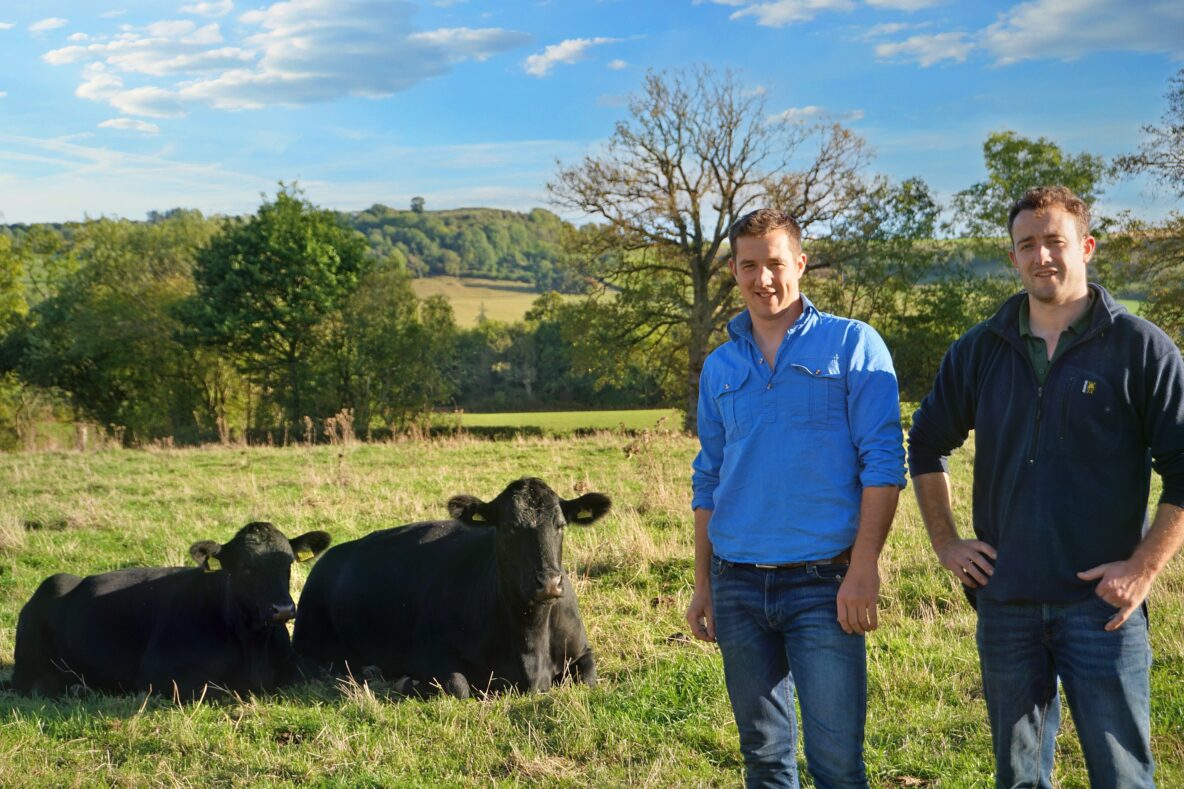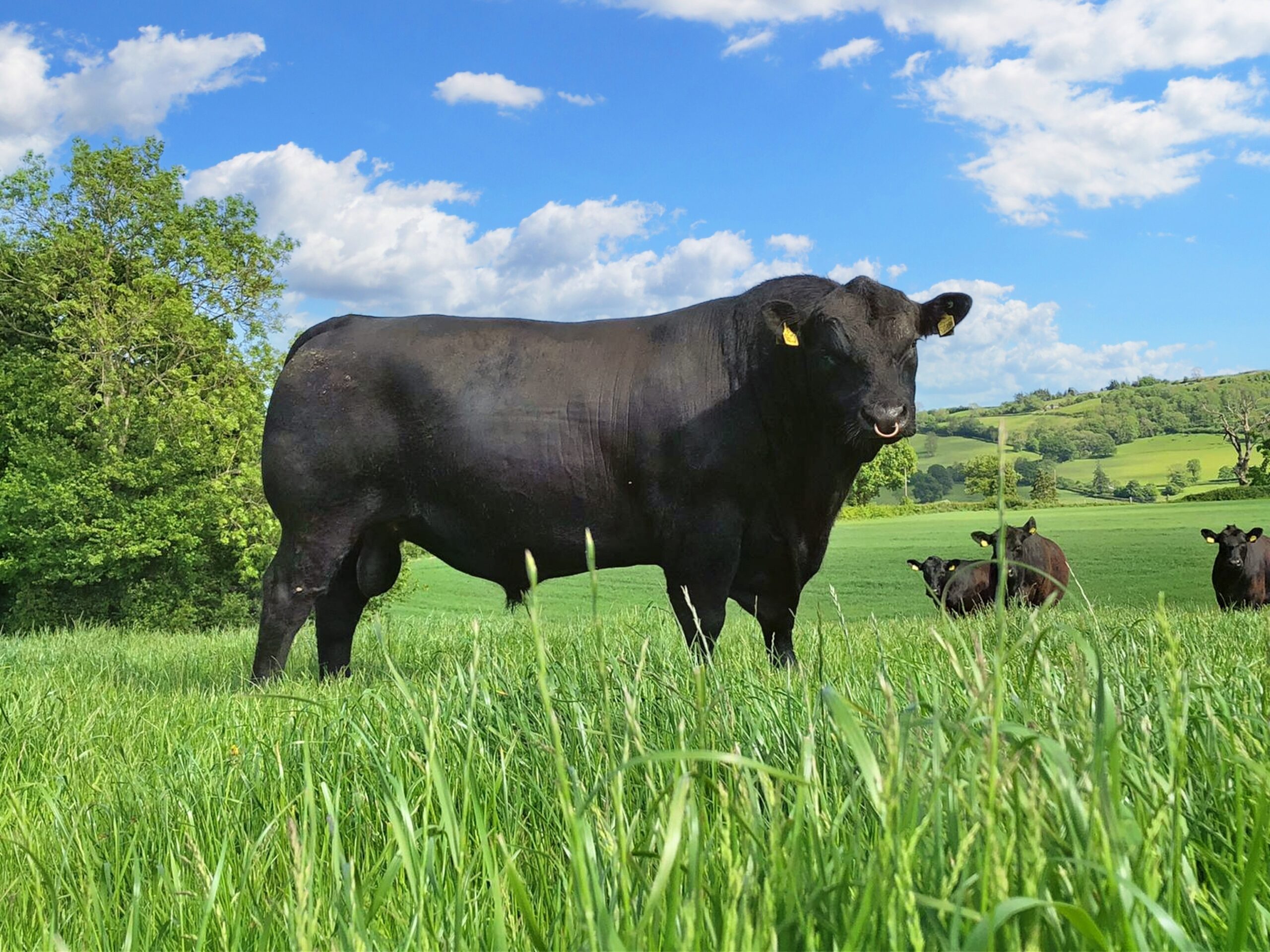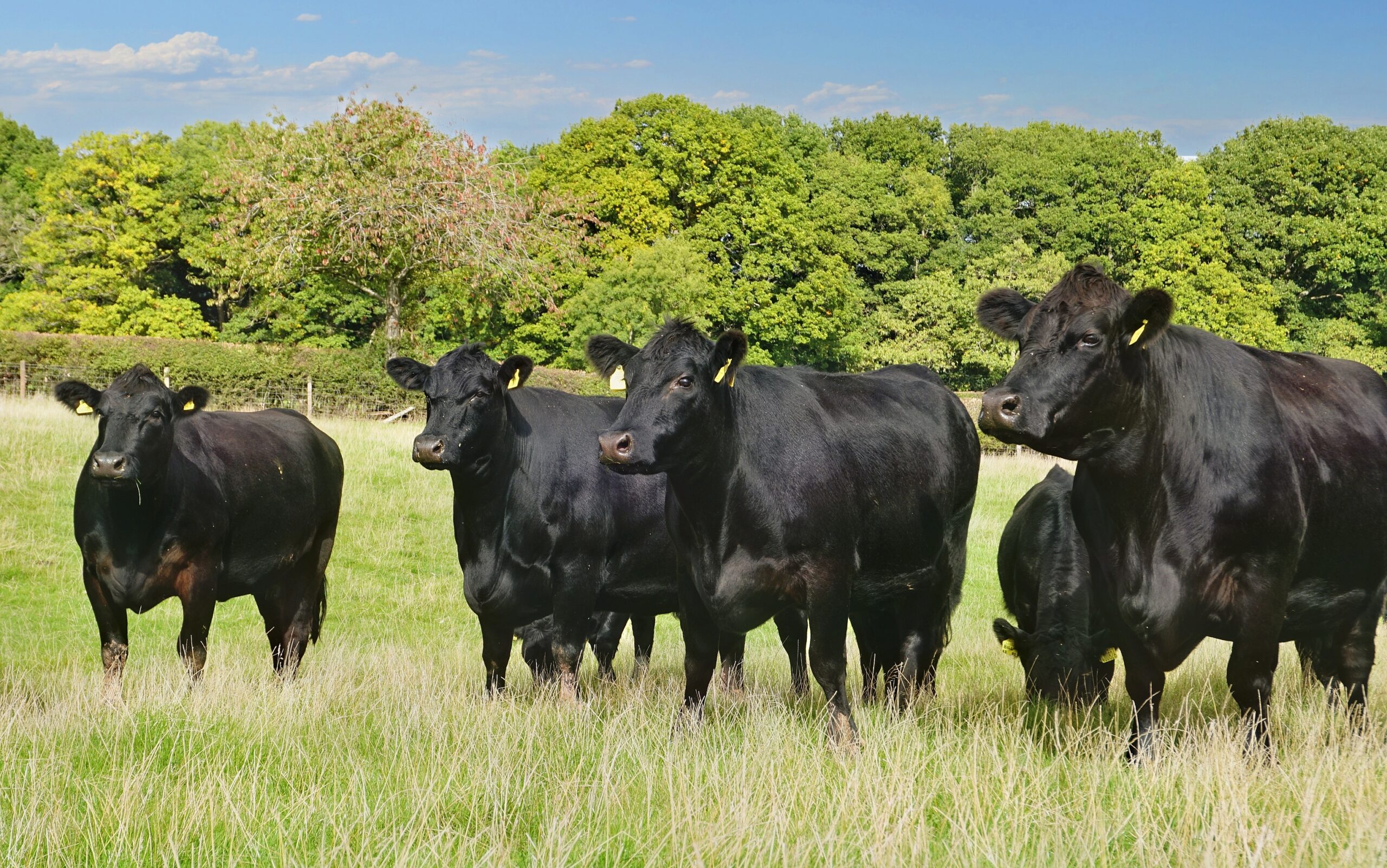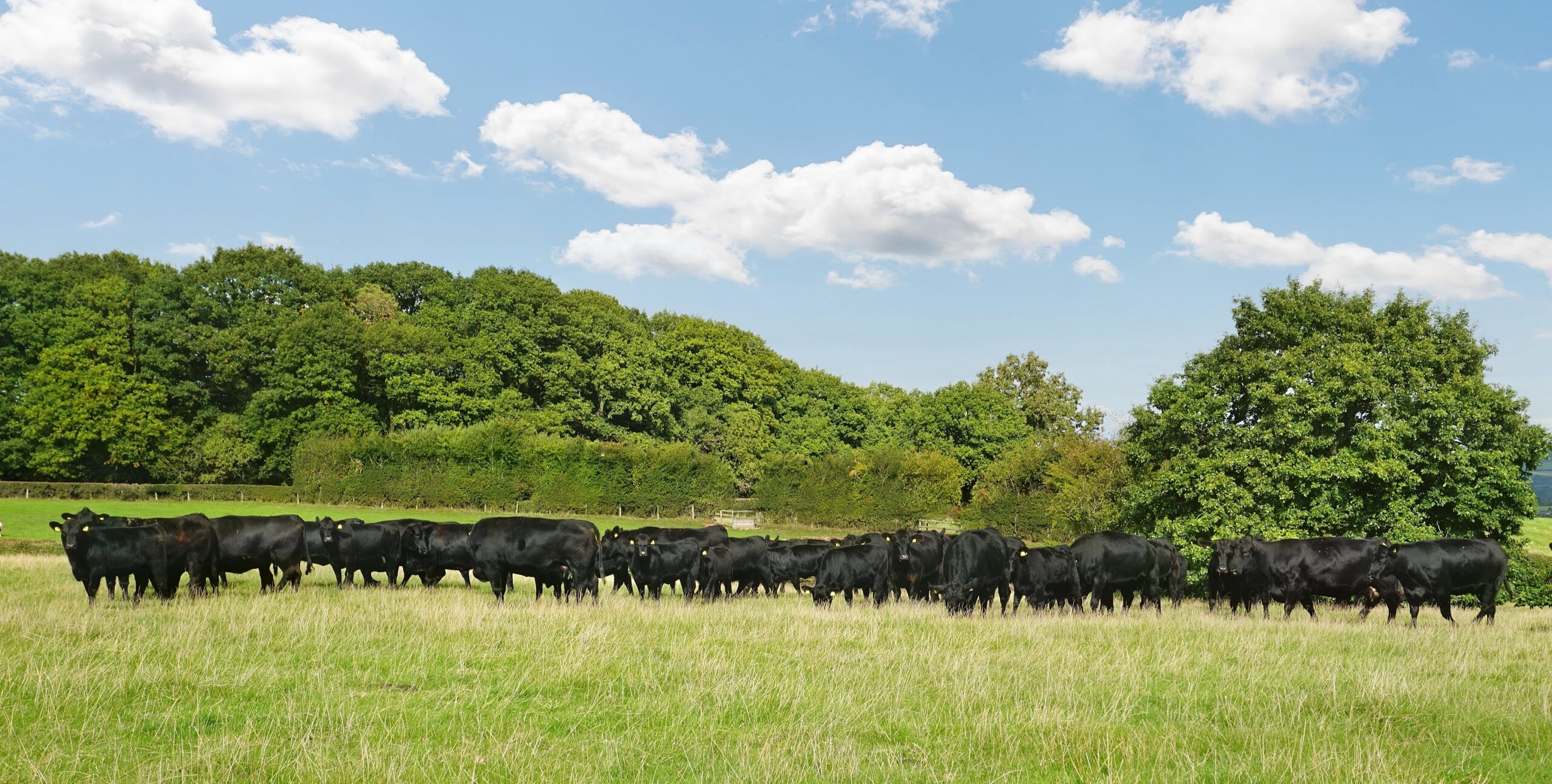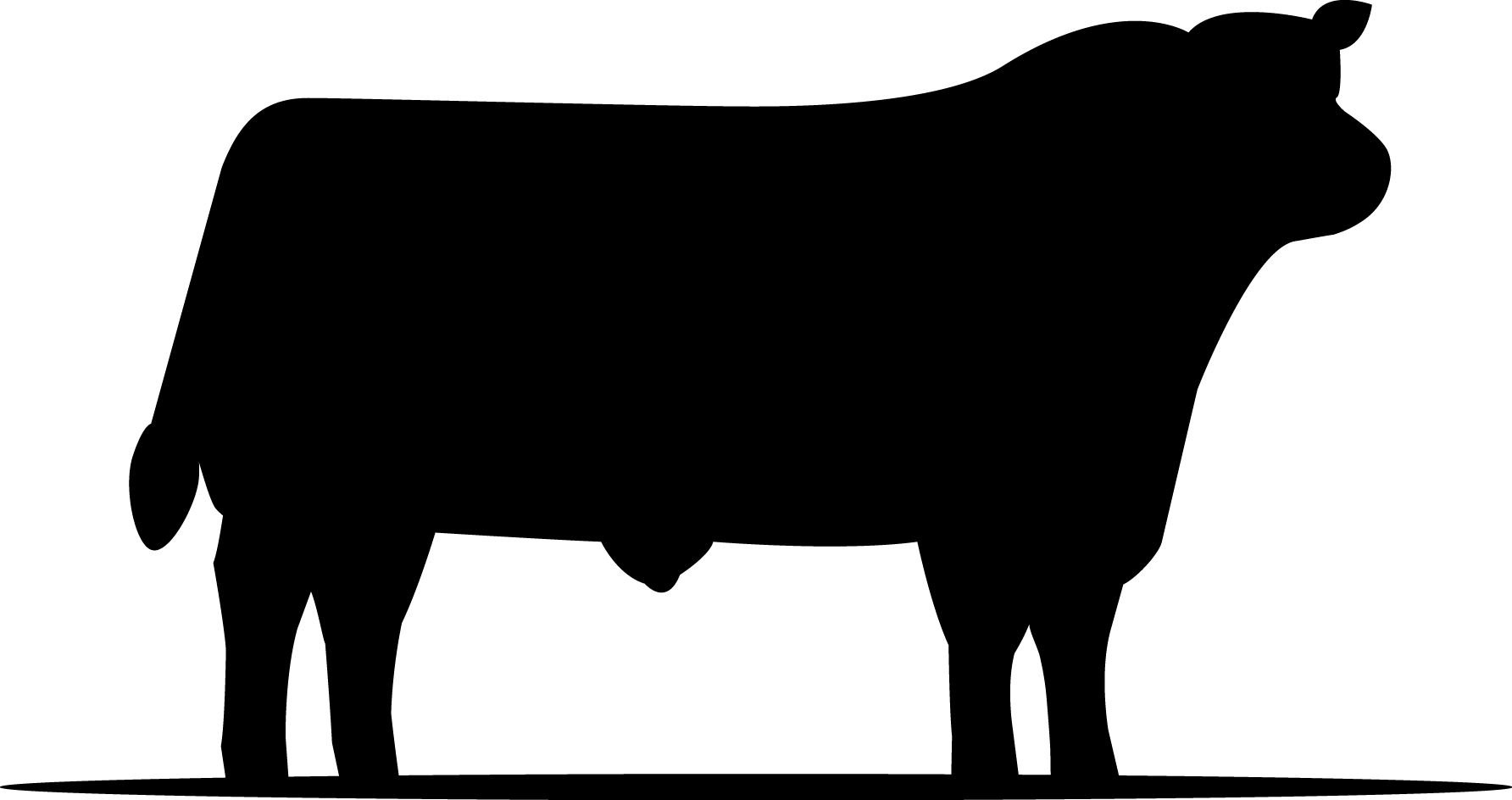The Gilbert family – Harry and his brother George, alongside their father Nick and uncle Phil – are fourth generation tenant farmers at Nantyglasdwr Farms near Hay-on-Wye.
They run a mixed livestock and arable enterprise at the 550-acre farm, which is home to the 60-cow pedigree herd of Aberdeen-Angus cattle under the Harewood prefix, a 1,000-ewe sheep enterprise comprising a mix of Suffolk cross Mules and Hardy Speckled ewes, and 200 acres of cropping.
An interest in achieving a high-health status for their commercial herd drove the Gilberts to a radical change in their farming system and five years ago the family started researching what breed of cow would best suit their system.
Farm facts
- 550-acre farm with 200 acres of cropping
- 60-cow pedigree Aberdeen-Angus herd under the Harewood prefix
- 1,000-ewe sheep enterprise comprising a mix of Suffolk cross Mules and Hardy Speckled ewes
- More than 20 breeding bulls sold in the last two years
- Any bulls not suitable for breeding finished on-farm at 15-18 months and sent to ABP, with heifers finished at 18-20 months and sent to local butchers’ shops
- Calving heifers down at 24 months

Old system
The Gilberts previously kept continental cows – Limousin cross, Salers cross, Blue cross and Simmental cross – with everything going to a Charolais or Limousin bull.
“We used to have commercial cows up until 2018,” explains Harry.
“But when we started focusing on achieving a high-health status by doing Johne’s and BVD testing with our old cattle, we had a little trouble with the odd calf showing up with BVD.”
He says the family decided to address the problem by culling problem cows and buying in replacements, however they struggled to find any high-health commercial farms to buy cattle from.
“We didn’t really keep our own replacements, so we always just bought in cows and calves from market,” adds Harry.
“But when we started doing the high-health testing that became tricky.”
The Gilberts decided a move to a pedigree, closed herd of cattle would help them achieve the high-health herd status they wanted, while creating a system that was easier to manage and less intensive.
“We started doing a bit of research into breeds; we wanted a cow that would look after herself, calf unassisted but would also produce high quality animals for today’s market,” explains Harry.
“Before we made the move to Aberdeen-Angus, we visited a few farms including Jeremy Price’s Oakchurch herd and Angus Stovold’s Rosemead herd. We were impressed with the cattle and thought they would be something that would suit our enterprise.”
“Straight away we noticed a massive difference in calving ease and with the quietness of the cows. The vigour of the calves also stood out massively. We pretty much fell in love with them straight away.”
Why change to Aberdeen-Angus?
The Gilberts started their Aberdeen-Angus herd with the purchase of 18 maiden heifers in 2018, comprising of 12 from Rosemead and six from Dark Lane.
“We bought these 18 pedigree Aberdeen-Angus heifers as a bit of an experiment and we calved them at two-years-old in the spring of 2019,” says Harry.
“The plan was to AI them to an Aberdeen-Angus sire – Australian bull Millah Murrah Klooney K42 – and then we swept up with an old Limousin bull that we had.”
Harry says the family was instantly impressed with the introduction of Aberdeen-Angus cattle to the farm.
He says: “Straight away we noticed a massive difference in calving ease and with the quietness of the cows.
“The vigour of the calves also stood out massively. We pretty much fell in love with them straight away.”
The family had grown to dread calving their old cattle as they often had to assist cows or tube-feed calves in the middle of the night.
However, the Aberdeen-Angus heifers impressed the Gilberts so much that a further 10 maiden heifers were bought from Dark Lane in 2019 alongside a bull from the Oakchurch herd – and all the commercial cattle were sold.
Change in business focus
The introduction of Aberdeen-Angus cattle to Nantyglasdwr Farms did not just mark a change in breeds, but also a change in focus for the farm’s beef enterprise.
It has moved away from producing calves for finishing on the farm, to primarily producing breeding stock to sell to other farmers.
All bulls were previously kept entire, finished at 15-16 months and sent to ABP, with heifers finished at 18-20 months and sent to ABP or local butchers’ shops.
The focus is now on producing breeding stock, and anything not suitable for breeding is finished on-farm with bulls going to ABP and all finished heifers going to the local butcher.
Harry says the finishing times have remained unchanged, however the quantity of concentrates needed has significantly reduced.
“When we went into Aberdeen-Angus we quickly found out that there was quite a market for bulls,” adds Harry.
“In the last two years we’ve sold over 20 bulls for breeding, and we’ve also found a massive demand for heifers already.”
All cattle are kept out at grass from the end of March until December, depending on the weather, and the calving period runs throughout February and March.
Cows are given straw while out at grass for a month after their calves are weaned in November, and once housed they get straw and minimal silage until calving. They are then fed better quality silage once they have calved.
“We’re registered with Breedplan and currently record calving ease, birth weight and daily liveweight gains with plans to backfat scan in the near future,” explains Harry.
He says a home-bred stock bull – Harewood Jack V694, which is out of one of the herd’s foundation heifers and sired by Millah Murrah Klooney K42 – is leaving an impressive mark on the herd.
“He is very much producing cows that are our type,” adds Harry.
“He isn’t a huge bull, but is naturally fleshy and very deep-bodied. We don’t want a massive cow, just one with a moderate frame that’s milky, fertile, and has a quiet temperament. Breed character is also important.”
“One thing we’ve noticed with the Aberdeen-Angus is that they stay fit; our heifers were still fit in the winter on just limited silage and straw.”
Less intensive management
The move to Aberdeen-Angus cattle has not only reduced the need for intervention at calving, but reduced input costs on the farm.
“Our home-bred stock bull Harewood Jack V694 is very easy-calving,” explains Harry.
“He had 30 cows in-calf in 2022 and they all calved unassisted, apart from one that was coming backwards, and his calves averaged 34kg birthweight for 24-month-old heifers and 39kg for cows.”
And from a financial perspective, Harry says the Aberdeen-Angus cattle require much less feeding than the farm’s continental cross cows did in the past.
“When we bought those first 18 heifers, I did a bit of a trial on them that winter,” adds Harry.
“Just on feed alone they cost us about £2,000 less to keep during the winter housing period, in comparison to 18 of our continental cows, primarily because they were on straw rather than good quality silage.
“Our old cows were very hungry, but one thing we’ve noticed with the Aberdeen-Angus is that they stay fit; our heifers were still fit in the winter on just limited silage and straw.”
He says the breed’s ability to thrive on minimal feed was especially beneficial in the long, dry summer of 2022.
Future plans
In the future the Gilberts hope to increase the size of their Harewood herd to between 80 and 100 cows and aim to bring a couple of bulls to the southern show and sale in Worcester this year while continuing their high-health status of being Johnes level 1, BVD and IBR accredited.
“I think with the challenges that the farming industry is facing with ever rising input costs, the less intensive Aberdeen-Angus cow can only be for the better as they still have the ability to thrive with substantially less inputs,” adds Harry.
“We can see the Aberdeen-Angus playing a big part in our farm business going forwards, and in producing beef that’s fit for the future.”
Follow us on Facebook at Harewood Aberdeen-Angus

